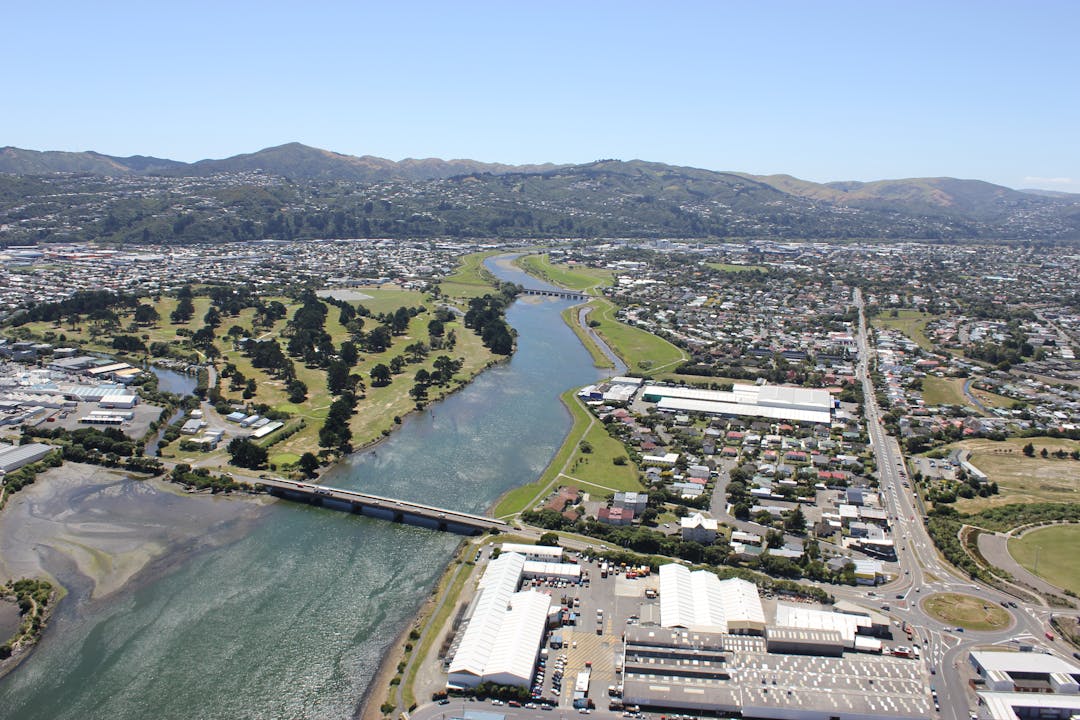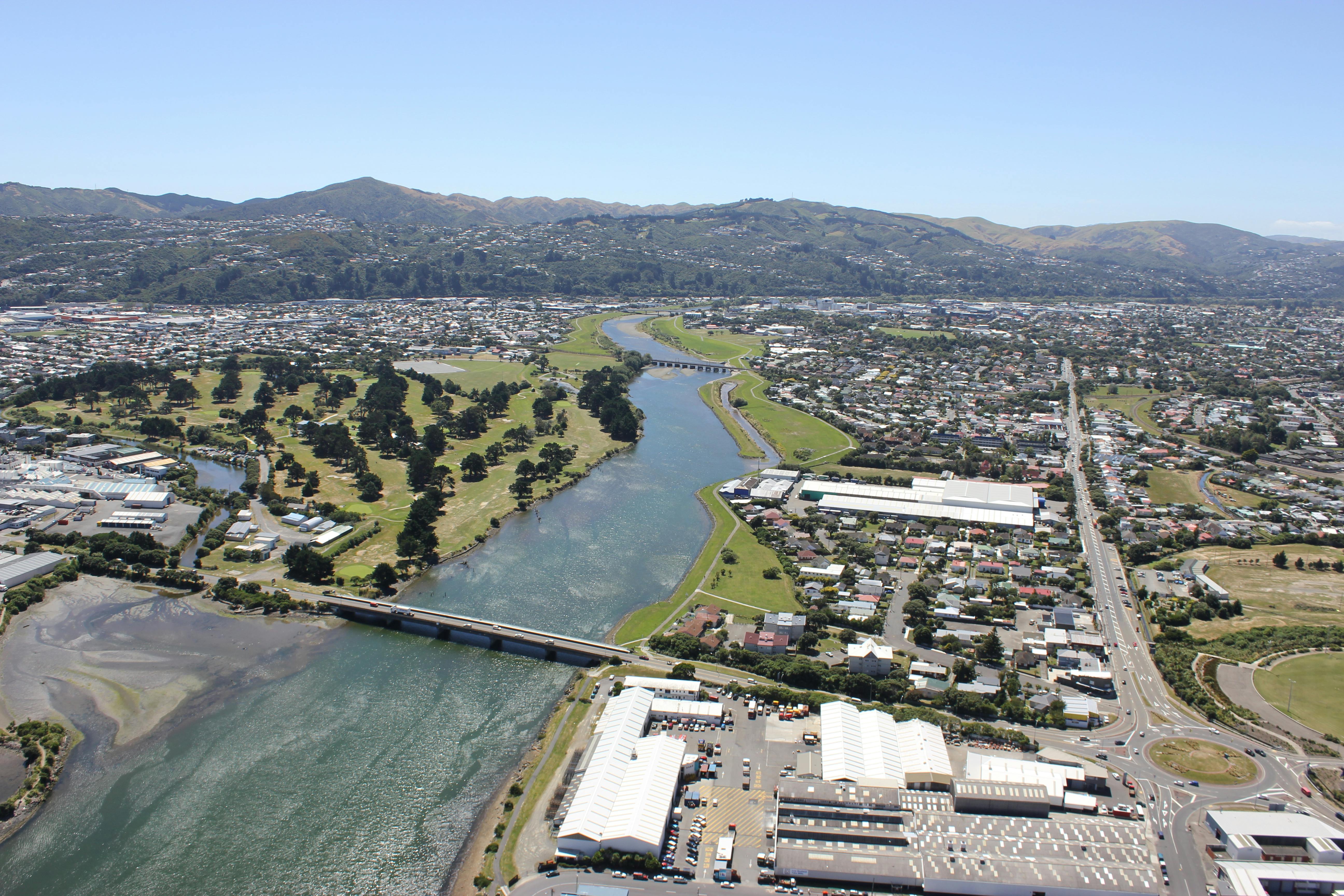District Plan Review
Consultation has closed.

This initial consultation on the District Plan Review has closed. Consultation on the Proposed District Plan is open until 2 May 2025.
We’re reviewing our district plan - the city’s rule book for development and how land is used. It affects every resident of Lower Hutt.
The review looks at important issues like how our city will evolve over the decades ahead, how it will look and feel, how to house a growing population, how we protect our indigenous biodiversity and historic heritage, and how we manage natural hazards and sea level rise.
We are currently seeking your thoughts on two important areas - natural hazards and aspects of residential development in Lower Hutt. There is more information under the "Key areas" tab below and you can take the surveys by clicking the "Surveys" tab. There are useful links to the right of this page about natural hazards that effect Lower Hutt.
Have your say
You can take the surveys to give us your ideas or ask one of our planners about the review by contacting us using the email address on the right of this page.
This initial consultation on the District Plan Review has closed. Consultation on the Proposed District Plan is open until 2 May 2025.
We’re reviewing our district plan - the city’s rule book for development and how land is used. It affects every resident of Lower Hutt.
The review looks at important issues like how our city will evolve over the decades ahead, how it will look and feel, how to house a growing population, how we protect our indigenous biodiversity and historic heritage, and how we manage natural hazards and sea level rise.
We are currently seeking your thoughts on two important areas - natural hazards and aspects of residential development in Lower Hutt. There is more information under the "Key areas" tab below and you can take the surveys by clicking the "Surveys" tab. There are useful links to the right of this page about natural hazards that effect Lower Hutt.
Have your say
You can take the surveys to give us your ideas or ask one of our planners about the review by contacting us using the email address on the right of this page.
Consultation has closed.
-
Walkable Catchments
Share Walkable Catchments on Facebook Share Walkable Catchments on Twitter Share Walkable Catchments on Linkedin Email Walkable Catchments link
Introduction
Lower Hutt’s population has grown in recent years. Unfortunately house building has not kept pace with this growth, and population growth is set to continue. The shortage of houses is contributing to a steep rise in the cost of buying and renting houses as well as an increase in homelessness. This issue is not just affecting Lower Hutt, but is being seen around New Zealand.
In order to tackle the national housing shortage, the government’s National Policy Statement on Urban Development instructs councils to allow greater density housing, including six-storey buildings, in residential areas within a walkable distance of city and metropolitan centres and rapid transit stops, like the train stations of Lower Hutt.
Councils are also required to allow increased density and building heights in other areas, based on the demand for housing in that area and how easy it is to access commercial centres and community services through active and public transport.
However, councils are still able to restrict housing density and building heights in areas in some specific circumstances (called ‘qualifying matters’). This includes where it is necessary protect historic heritage and ecological sites, retain public parks and manage natural hazard risk.
Your views
We are interested in hearing your views on the walkable neighbourhoods of Lower Hutt, and how greater housing density (including six-storey buildings) should be enabled in these areas. In particular, we would like to hear your thoughts on:
- What you think is a reasonable distance to walk to a commercial area that provides a wide range of shops, commercial services and community facilities.
- What you think is a reasonable distance to walk to our local train stations.
- Where else you think is suitable for additional housing. This could be areas with good access to recreation opportunities (like our local parks, the Wellington Harbour and the Hutt River), areas with good access to employment and education opportunities, or anything else that you think makes for a great location for people to live.
- What you think would make our neighbourhoods more walkable. This could be things that make the area more enjoyable (like street trees and parks), things that make you feel safer (like good lighting and pedestrian crossings) or anything else you think makes for a high quality, walkable neighbourhood.
- What you like to see in the design of higher density housing like terrace houses and low-level apartments. This could be things like the appearance of new buildings from the street or other public spaces, building materials and landscaping, how storm-water is managed, or anything else you think makes for high quality housing.
-
Natural hazards
Share Natural hazards on Facebook Share Natural hazards on Twitter Share Natural hazards on Linkedin Email Natural hazards linkLower Hutt is vulnerable to a number of natural hazards including earthquakes, flooding, slips and erosion. Since humans arrived in the region we have experienced many hazard events.
Natural hazards and the district plan
Natural hazards are naturally occurring events that could have a negative effect on people or our environment. Hutt City Council is required to manage natural hazard risk under the Resource Management Act and the Wellington Regional Policy Statement.
The district plan’s rules and policies are an important way of managing the impacts of natural hazards on life, property, roads and other infrastructure. As part of our district plan review, we are working with other organisations to identify hazard prone areas. In light of this the district plan will need to consider if and where restrictions on future use and development are required.
Earthquakes
The district has a number of fault lines. The largest is the Wellington Fault line which runs along the northwest side of the Hutt Valley. Earthquakes are unpredictable, Their effects include ground shaking, liquefaction, ground subsidence or sinking, fault rupture, landslides, and tsunamis. All of these can cause serious damage to buildings and infrastructure, and pose a significant threat to life.
We are reviewing our existing information on the areas that are particularly vulnerable to the impacts of earthquakes, including a technical assessment on tsunami hazards being undertaken by GNS.
Flooding
Extreme weather and flooding have been the key cause of property damage and disruption in Lower Hutt. Flooding can be caused by rivers and streams, storm-water runoff, storm surge causing large waves and tides, and sea-level rise. The Hutt River Te Awa Kairangi valley is the most densely populated floodplain in New Zealand. Many of our settlements are also low lying and located along the coast, such as Eastbourne and Petone. This means that a lot of Lower Hutt is particularly vulnerable to damage from flooding. Other streams flowing into the Hutt River Te Awa Kairangi also pose flooding risks, such as the Waiwhetū and Korokoro streams. Areas such as Stokes Valley and Wainuiomata are also built on floodplains. Flooding and storms can also cause slips and erosion.
Climate change is likely to make flooding worse by generating more intense storms and causing sea levels to rise, potentially flooding low-lying coastal areas and slowing drainage of our rivers, streams and storm-water.
Flood water can pose serious threats to human life as well as damage to property and can interrupt commerce and essential service, such as drinking water and power. Wellington Water are modelling storm-water flooding for much of the district and Greater Wellington Regional Council are updating their river flood modelling.
Land instability
Lower Hutt includes significant areas of steep terrain that can be prone to land instability. Slope instability can be triggered by earthquakes, heavy rainfall, the action of water (such as waves undercutting cliffs) and human activities like earthworks, building and vegetation clearance.
We are working with WSP to undertake a technical assessment of land instability across the district which will inform the district plan review.
Who's listening
-
District Plan Review
Phone (04) 570 7426 Email dpreview@huttcity.govt.nz
Timeline
-
2020 to late 2021
District Plan Review is currently at this stage- Research and evaluation of current plan
- Initial engagement begins
- Draft plan by end of year
-
Early 2022 to mid-2022
this is an upcoming stage for District Plan Review- Draft plan released
- Public consultation on the draft
- Consultation feedback reviewed
- Proposed district plan finalised.
-
Late 2022 to mid-2024
this is an upcoming stage for District Plan Review- Notification of draft plan
- Formal consultation and submissions
- Public hearings and final decision on the plan
-
Mid-2024 onwards
this is an upcoming stage for District Plan ReviewEnvironment Court appeals

